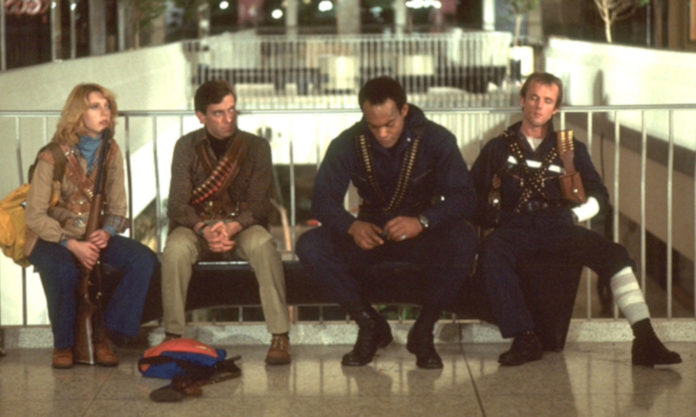In a post on Lit Reactor, Peter Derk says that anchoring your horror novel in a specific time can help your readers relate to your characters, draw them into your story, and ramp up the terror. “Plenty of writers will try to remove signifiers of time from their horror stories in order to make them feel timeless,” Derk says. “I’m here today to encourage you to do the opposite, make your horror stories SO [insert year here].”
Derk identifies two problems with timelessness:
- You don’t know what elements identify an era until it’s passed. “If you wrote a horror novel in the 60s, and you wanted it to feel timeless, you’d probably avoid references to contemporary music,” Derk explains. “And then someone would smoke indoors. Because you’d have no idea that’d be a weird thing in 40 years.”
- The ways we try to make something “timeless” end up highlighting their era. For example, modern movies have gone through different periods when filming in black and white was an artsy choice. However, instead of lending these films a timeless feel, the form dates them to the year that was trendy.
So, if you can’t avoid time, how can you take advantage of it?
- Be specific. Your audience might not relate to specific details in your story, but they can identify with what they signify. For example, a modern reader probably hasn’t worn Toughskins, but they’ll understand that Sears brand jeans were less preferable than more expensive Levis. “When you lean into your era, it helps the reader see your experience as their experience,” Derk says. “What’s universal is growing up broke, not the specific names on the label of the jeans you can’t afford.” Then, when you stab that Toughskins wearing teenager in the face, your audience is more likely to care.
- Use factual elements. “For some people, a shred of non-fiction helps them to relax and enjoy a fictional tale,” Derk writes. “Grounding your story in an era gives you a tiny, subtle, subconscious non-fiction element that can help pull those people in.” This is especially important in horror. If your reader believes your story did – or at least could – happen, the scares will feel more real.
- Add some humor. Audiences enjoy shows like Mad Men because they can compare and contrast life in the 1950s to today. Don’t be afraid to add details and comments that specifically date your story, especially if they highlight a significant – and humorous – cultural change. See: Cars without seatbelts, candy cigarettes for kids.
- Use time to ground your audience. The opening scene of Dawn of the Dead is very 1978. “But within about 15 minutes, the chaos of the dead rising causes us to be unanchored from time,” Derk says. “We’re torn out of a time and shoved into a new world where time has no meaning. Don’t deny your reader the horror of that movement. Set us in time, give us that bit of comfort, then tear it away.”












